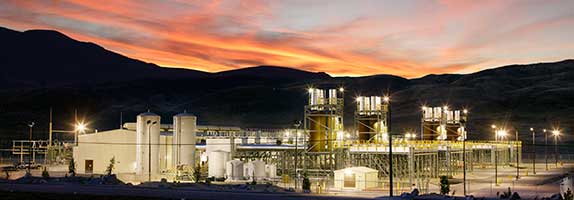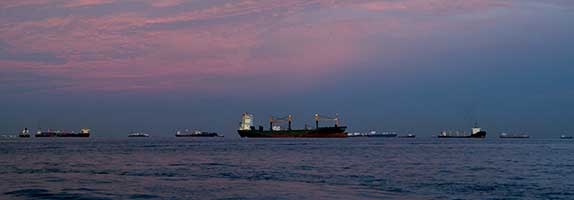


The Energy team bid farewell in February to long-time colleague, Rodney George, who retires after more than 33 years with Wärtsilä.
Known to many Wärtsilians as the "King of The Caribbean", Rodney has achieved much success during his time with us, such as over 3000 MW of capacity and $1.5B in sales in the Caribbean! This encompasses many “first” engines sold in Caribbean countries as well as establishing local offices, such as in Puerto Rico.
In recognition of Rodney's accomplishments, a “statue” was presented in appreciation of his contributions by the local AMER Energy team: a chromed piston crown with his moniker inscribed along the top with The Caribbean region lasered in the middle.
Such a great tenure offers us the opportunity to discover the history and accomplishments of our team throughout the years. Read on to learn about Rodney's experience as a Wärtsilian.
In Rodney's words - my Wärtsilä experience
I never dreamed that I would spend thirty-three and a half years of my life working in one organization! But it became a reality on 28 February 2023. Yet, it feels like I began that journey just yesterday – an exaggeration, but I think you get the point. This has been such an exhilarating and fulfilling experience for me that I felt compelled to chronicle the key events of this journey while I have good recall, not entirely blurred by the passage of time.
I joined Wärtsilä (then Wärtsilä Diesel) in August of 1989 as a project manager with my first assignment being to manage Wärtsilä’s first EPC turnkey power project in the continental United States. This was the Ringgold Cogeneration project in the town of Ringgold in Western Pennsylvania. This project had many unique features:
-First application of the Wärtsilä 32 GD (dual fuel high pressure gas engine) in a multi-unit configuration
-One of the first Wärtsilä diesel combined cycle power plants (1.2 MW steam turbine with steam generated from engine exhaust gases) with a cogeneration feature - engine high temperature cooling water circuit supplied heat in the winter to an adjacent 4-hectare (10-acre) greenhouse for growing tomatoes
-First application of a PLC based control system for overall plant monitoring and control in a Wärtsilä power plant
Other project management assignments included:
-17 MW plant in Puerto Plata, Dominican Republic
-110 MW plant in Batangas, Philippines
-110 MW plant in Subic Bay, Philippines
-230 kV substation for Power Barge Project in Puerto Quetzal, Guatemala
I also had a stint working with our colleagues at then Wärtsilä-SACM in Mulhouse, France working on the development of a microprocessor-based control system for our tandem generating sets in nuclear power plant applications.
Developing the Caribbean
My transition to power plant sales began in 1994 with the introduction of the first Wärtsilä generating unit in the eastern Caribbean, a 5 MW unit for the Grenada Electricity Services Limited (GRENLEC). That unit is still in operation today.
In June 1995, I formulated a business plan for developing the Caribbean market. This was an unsolicited plan that was presented to Clas-Eirik Strand, the then head of Wärtsilä Global Power Business. I received the go-ahead to implement that plan in December of 1995 and was tasked to establish a new company, Wärtsilä Caribbean Inc., located in Puerto Rico.
This was the seminal event which catapulted Wärtsilä to be the undisputed leader as a turnkey supplier of power plants in the Caribbean region, stretching from Jamaica, in the North, to Suriname and Guyana, in the South, and encompassing the Dominican Republic, Haiti, Puerto Rico, British and US Virgin Islands, Eastern Caribbean chain of islands and the Dutch Caribbean islands of St. Maarten, Curacao, Aruba and Bonaire.
Appointed as Vice President, Power Plants for the Caribbean region, I embarked on the twin path of establishing the physical infrastructure which became our office in Guaynabo, Puerto Rico and starting the market development process in the region. In the meantime, our colleagues from the Services Group started putting together their organization to serve the needs of our new customers. This was an important element in the business plan – having a localized service organization that could respond quickly and efficiently to customers’ needs.
Another essential constituent of our strategy was to establish ties with the Association of Caribbean Electric Utilities widely known by its acronym CARILEC. In 1996, Wärtsilä Caribbean joined CARILEC as an Associate Member when that organization was still in its formative stages. From the very beginning of our membership, we became the main sponsor of two key annual conferences: Chief Executive Officers’ (CEO) Conference and the Engineering Conference. In addition, over the years, we have supported CARILEC in assisting its members following major hurricanes – on two occasions, donating US$50,000. Today, we are still a strong supporter of CARILEC.
What have we achieved in the Caribbean market?
I am delighted to say that the team that I assembled is responsible for over US$1.5 billion in sales covering the period 1996 to the present, and counting. This represents the addition of over 3,000 MW during that period. These numbers aside, it is important to note that the good customer relationship and trust established over the years have led to exceptional repeat business, unmatched by any competitor.
Groundbreaking Projects in the Caribbean Region:
There are a number of projects sold in the region which bear special significance not only to me personally but to Wärtsilä - as they were groundbreaking events that contributed to our continued success in the region. There are several but I will only mention three:
1. Cul de Sac power station - Our breakthrough project in the Eastern Caribbean was in 1997 when we won a competitive tender for expansion of the Cul de Sac power station owned and operated by St. Lucia Electricity Services Limited (LUCELEC). This first project consisted of a new power house with 2 x 10 MW generating units. Over the next several years the plant was further extended and today it consists of seven units with a total capacity of 78 MW.
2. WEB Aruba - In 1997, we sold our first reciprocating generating set for black start/peaking duty to WEB Aruba, the electric and water utility on the island of Aruba. At that time, WEB’s generating assets were oil fired steam turbine generating sets with steam extraction for water production using flash distillation technology. Following this success, we doggedly made presentations to WEB, entreating the utility to consider graduating to an all-reciprocating engine fleet for power generation, highlighting the potential for tremendous savings in fuel costs. It was not until 2005, eight years after our earlier success with the black start unit, WEB finally made the move to consider a reciprocating engine plant for generation expansion and we won a competitive tender for a 24 MW heavy fuel oil fired power plant at the Balashi generating complex. In 2007, less than one year after this plant was commissioned, we were sole sourced to supply an additional 24 MW. In 2010, we were again sole sourced to provide a 44 MW power plant this time based on the 12V46 technology. Concurrent with these capacity additions, WEB began to embark on a program to gradually retire its steam turbine assets having already made significant moves to restructure its water production based on reverse osmosis technology. In 2017, WEB began an earnest effort to diversify its fuel mix with LNG and once again we were sole-sourced to provide a 102 MW dual fuel power plant based on the Wärtsilä 50 DF technology. Today, WEB’s base load thermal power production is based on an all-Wartsila generating fleet totaling 194 MW.
3. Barbados Light and Power - By the year 2018, Wärtsilä had pretty much established a footprint over the entire Caribbean region particularly in the English-speaking Caribbean, with a few notable exceptions: the island of Barbados and in the wider Caribbean, the French territories of Martinique and Guadeloupe. Barbados Light and Power (BL&P) had been a target from the time we started our focus on the Caribbean market, but being a faithful disciple of slow-speed engine technology, BL&P was an elusive target and success evaded us - and not for lack of trying. A breakthrough came in 2019 when we emerged as the successful bidder in a hotly contested competitive tender for a new medium speed 33 MW HFO fired power plant. Despite enormous challenges due to the pandemic, and ash contamination of the site as a result of the La Soufriere volcano eruption on the island of St. Vincent, we handed over the plant to BL&P in July 2022.
What's next for the Caribbean?
There are still several other challenges and some new ground to be broken in the Caribbean. Some island utilities are considering “new” fuels such as natural gas and LPG. New offshore oil and gas discoveries by some territories are likely to spawn large dual fuel or natural gas fired power plants. Hybrid power plants incorporating renewables and energy storage are getting the attention of various Caribbean utilities while others are considering energy storage for spinning reserve and frequency regulation. The Caribbean market is alive and kicking and although we are a key player in that market, there is still work to be done and projects to be had.
Today, the “Caribbean Business Development Team” consists of two other individuals who I’m proud to say, I personally recruited: Edmund Phillips and Tganni Louisy. Both colleagues are showing their mettle and ensuring that Wärtsilä continues to be the energy partner of choice for Caribbean utilities and IPPs.
I am very proud of all these achievements and the teamwork and memories that go along with them. To the members of my team, I say keep up the good work and happy hunting! To my many friends in North America, the Caribbean, Central and South America, Finland, and indeed colleagues in various countries around the world with whom I have interacted over the years, I wish you the very best in all of your endeavors.
Bye, adios, au revoir, ciao, hyvästi, adjö, auf wiedersehen, ma’a salama, zaijian,
Rodney George